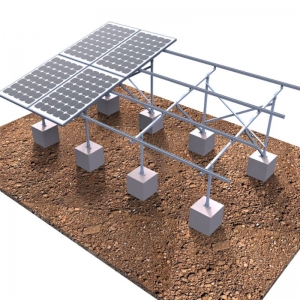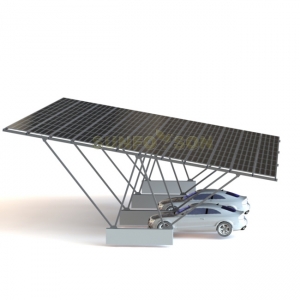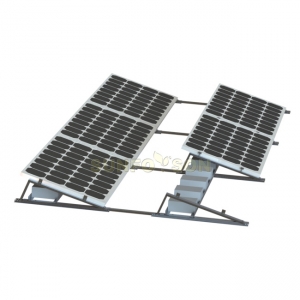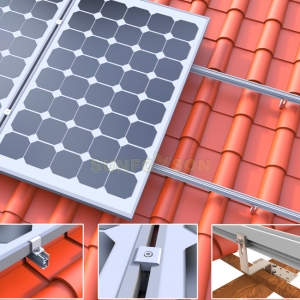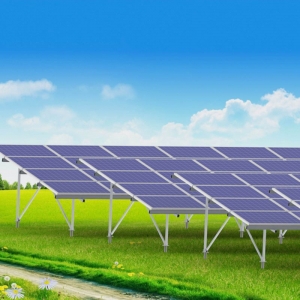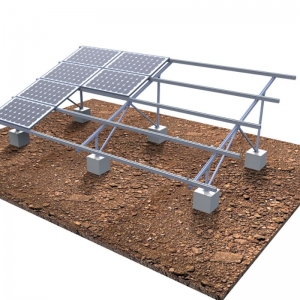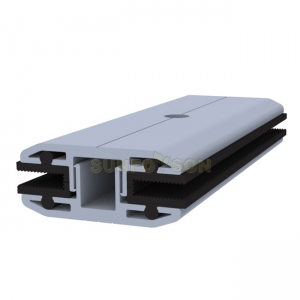At present, green energy buildings in the integrated market are mainly concentrated on industrial and commercial roofs and factories with low carrying capacity. The roof load requirements of conventional glass photovoltaic modules are all above 15Kg/㎡, so they cannot meet the low carrying capacity of industrial and commercial roofs.
At this time, lightweight components have become the best choice. For lightweight components, ultra-thin flexible glass and high molecular polymer materials are generally selected as the front plate, and the back plate is supported by aluminum plates to meet the requirements for "lightness" of the components. However, from the perspective of market mass production, ultra-thin glass has a relatively high price so far, which cannot meet the demand for mass production. The use of high molecular polymer materials as the lightweight components for the front panel production, airborne, fire protection, hail and other tests are huge tests for it.
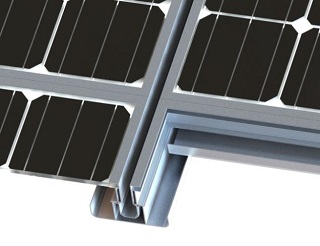 Feature:
Feature:
High appearance, light weight
High reliability
High power generation
Customizable
Convenient transportation and installation
Lead-free environmental protection
First of all, its module structure looks like angel wings, light and high in appearance. The module weight is as light as 3.3Kg/㎡ and the thickness is as thin as 2.5mm, which perfectly meets the market’s high appearance and light weight for green building photovoltaics. Requirements. The weight of traditional glass modules is about 11Kg/㎡, and the weight of daycare photovoltaic light-weight modules is less than one-third of that. In addition, the lightweight module is super-thin silicon wafers on the basis of the natural flexible technology of zero welding, which ensures the reliability of the module, and has stronger toughness and a minimum bending radius of 0.3m.
Secondly, it is the choice of component materials. Good materials are the basis for high reliability. At present, among manufacturers of lightweight components in the industry, the biggest technical difficulty lies in the hail and fire test of component products. The light-weight components of Suncare Photovoltaic adopts high-transmittance, anti-UV, and anti-scratch polymer materials as the front plate, combined with high-reliability packaging materials, and completely overcome the technical problems in the industry. It has passed IEC61215 and IEC61730. The required full set of tests, and the test results are excellent.
In addition, the lightweight component adopts a frameless design, which can effectively avoid the problem of dust accumulation at the rear of the glass component, reduce unnecessary power loss, and fundamentally avoid the risk of PID generated by the component.
Whether a component has an advantage or not, power generation is one of the most important evaluation indicators. According to customer feedback, the power generation of MWT light-weight modules of Suncare Photovoltaic is slightly higher than that of conventional ribbon glass modules. According to the data of a distributed system connected to the grid in Wuxi at the end of 2019, under the same installation conditions, the power generation of MWT light-weight modules of Daycare Photovoltaic is higher than that of conventional ribbon glass modules. The annual power generation capacity of kilowatts is 1,080 kWh, while the average annual power generation capacity of conventional ribbon glass components is 1,060 kWh per kW. The annual power generation advantage of MWT lightweight components is about 1.89%.
The light-weight module S series (S-Flex6, S-Flex1, S-Flex6Ⅱ) of Sunrack Photovoltaic can be customized to produce a variety of non-standard customized and special-shaped products according to customer needs. , Which not only improves the appearance of the product itself, but also meets the installation requirements of different differentiated installation scenarios.
Based on the advantages of lightness and thinness, more components are packaged in the same volume, which saves packaging and transportation costs; in addition, the bonding installation method eliminates the process of bracket riveting and fixing compared with conventional glass components, saving manpower and installation time.
Lead-free component processes and materials realize true green energy. At present, lightweight components are mainly used in distributed roofs. With the country’s strong support for the BIPV industry, lightweight components can be more widely used in smart cities and other new technologies in the future. Scenes, adding fuel to the goal of carbon neutrality.
At present, the cost of photovoltaic systems has dropped rapidly, and BIPV module products have begun to have the economic advantage of directly replacing the color steel tile roofs of factories. The application scenarios of lightweight modules are abundant, and the roof load requirements are low. Lightweight module products represented by day care will be the dark horse that will occupy the BIPV market in the future.
Email:info@sunforson.com
Website: www.sunforson.com












